Bramble Familiar and Invasion of Alara : A Worrisome Combination?

To immediately answer that question, no. At least not yet. Folks would certainly point out to a similar loophole in double-faced cards like Valki, God of Lies , and accuse WoTC of not seeing the pattern before R&D approved of it. But believe me, it is actually much more tame than it looks. Though honestly speaking, when it does go off, it can occasionally feel like you're playing in Pioneer or Modern.
, and accuse WoTC of not seeing the pattern before R&D approved of it. But believe me, it is actually much more tame than it looks. Though honestly speaking, when it does go off, it can occasionally feel like you're playing in Pioneer or Modern.
Anyway, I'm getting ahead of myself so here is a bit of intro. Regular watchers and readers of MTG content online may have already noticed the rounds that a certain value-filled deck has been doing for the last two weeks. And to double check, this does not include the infinite value generator trio that was discussed more than a week ago.
Combo Recap
The idea is simple. Cast an Invasion of Alara // Awaken the Maelstrom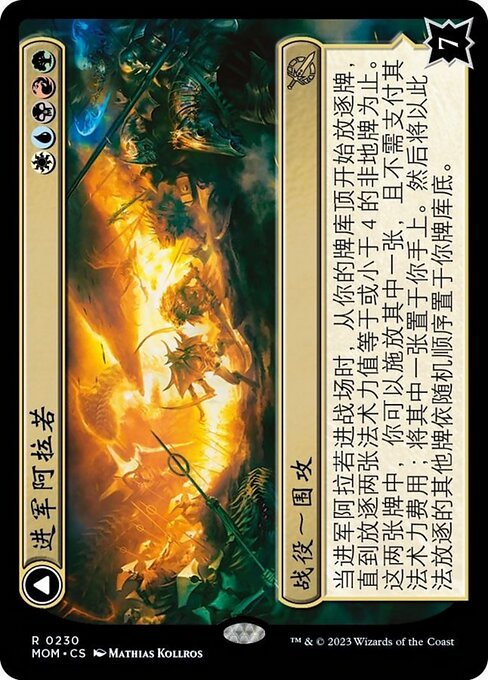 , hit a Bramble Familiar
, hit a Bramble Familiar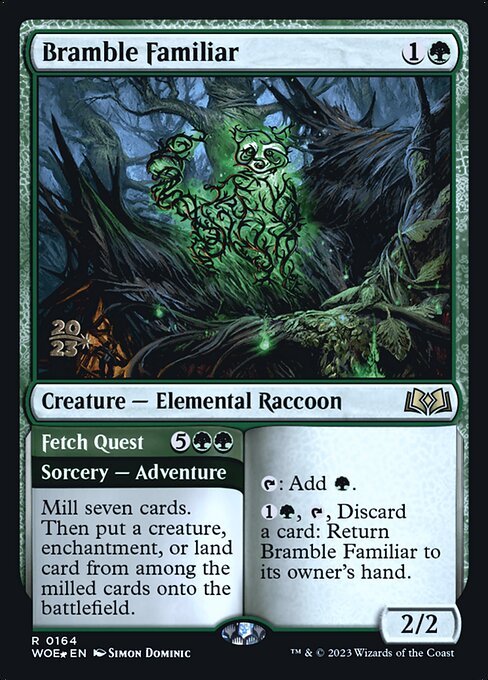 , then cast its Adventure part. How is that possible? Well, let's break it down into individual steps:
, then cast its Adventure part. How is that possible? Well, let's break it down into individual steps:
- Cards with secondary costs (or faces) check their mana value only on the primary side/portion of the card.
- Since Bramble Familiar
 counts as "four or less" (2), it fulfilled the effect condition of Invasion of Alara // Awaken the Maelstrom
counts as "four or less" (2), it fulfilled the effect condition of Invasion of Alara // Awaken the Maelstrom .
. - However, because the battle card says you can "cast the card without paying its mana cost", you get to play the familiar as a regular spell.
- Since it is counted as a (free) regular spell, you are given the option to cast it as an Adventure. Since you no longer have the pay its mana cost, Fetch Quest essentially becomes completely free.
So as you can see, Bramble Familiar is able to completely circumvent its inherent limitations simply due to the "cast without paying its cost" clause. The Adventure part of the cost doesn't matter, so long as it correctly checks the mana value requirements on the main card
is able to completely circumvent its inherent limitations simply due to the "cast without paying its cost" clause. The Adventure part of the cost doesn't matter, so long as it correctly checks the mana value requirements on the main card
It Gets 'Worse'
The synergy, of course, does not end there. Because we want to consistently hit Bramble Familiar with it. We want the deck to continuously whiff on other cards until it hits only the familiar, or the other alternative. We also want Fetch Quest to consistently get the most broken stuff for free without consequences so the milled cards should be of great value. The easy answer to this? the rest of the deck must have mana values more than four. In the current meta, the sweet spot lands on six and seven, since a lot of the biggest value generators are found in this mana value.
with it. We want the deck to continuously whiff on other cards until it hits only the familiar, or the other alternative. We also want Fetch Quest to consistently get the most broken stuff for free without consequences so the milled cards should be of great value. The easy answer to this? the rest of the deck must have mana values more than four. In the current meta, the sweet spot lands on six and seven, since a lot of the biggest value generators are found in this mana value.
The most notable of which is Cemetery Desecrator , which creates an even crazier combo with Invasion of Alara // Awaken the Maelstrom
, which creates an even crazier combo with Invasion of Alara // Awaken the Maelstrom . Remember the need for six or seven mana-value permanents? Well, now those that Fetch Quest did not choose can be chosen by the desecrator for its effect. The magic number seven will then work its way to instantly transform the battle card, which, of course, spells even more value trouble for the opponent.
. Remember the need for six or seven mana-value permanents? Well, now those that Fetch Quest did not choose can be chosen by the desecrator for its effect. The magic number seven will then work its way to instantly transform the battle card, which, of course, spells even more value trouble for the opponent.
The worst of which is copying that very desecrator, which resets the combo again if you have another invasion in play. All using that one single card.
Fetch Quest Candidates
The deck is rather a special brew all of its own. Anyone who has seen the birth of new competitive decks already knows the feeling. The sensation of the cards firmly clicking into their respective uses. The deck as a whole forms its identity. Most notable of all, the sudden rapid succession of victories from those who were able to grasp its potential first.
Because it's not just those two cards, the rest of the deck, as expected of a new potentially meta deck, serves well to achieve its unified purpose:
Cemetery Desecrator - as explained earlier, this card is the most synergistic element that allows Invasion of Alara // Awaken the Maelstrom
- as explained earlier, this card is the most synergistic element that allows Invasion of Alara // Awaken the Maelstrom to finalize its combo through transformation. In a pinch, you can also use its other effects if strategically appropriate.
to finalize its combo through transformation. In a pinch, you can also use its other effects if strategically appropriate.
Atraxa, Grand Unifier - the best standalone value-driven option for seven mana value cards. Very much worth playing even if hard-casted. Also helps in finding the battle card if things get somewhat late.
- the best standalone value-driven option for seven mana value cards. Very much worth playing even if hard-casted. Also helps in finding the battle card if things get somewhat late.
Etali, Primal Conqueror // Etali, Primal Sickness - the alternative standalone value-driven option, if you don't mind its random effect. Functions similarly to boost the stability of the Invasion of Alara.
- the alternative standalone value-driven option, if you don't mind its random effect. Functions similarly to boost the stability of the Invasion of Alara.
Phyrexian Fleshgorger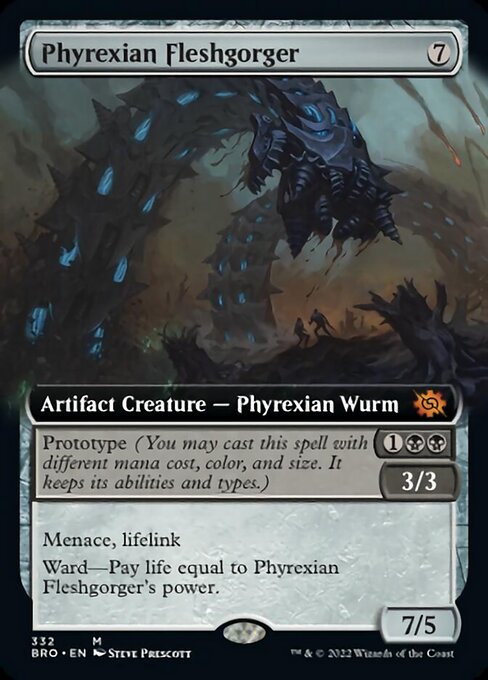 - A modal lifelinking bruiser. Can be cast for its prototype cost while waiting for Invasion of Alara // Awaken the Maelstrom
- A modal lifelinking bruiser. Can be cast for its prototype cost while waiting for Invasion of Alara // Awaken the Maelstrom or stabilizing your mana resource, and can be chosen as a finisher later for Fetch Quest.
or stabilizing your mana resource, and can be chosen as a finisher later for Fetch Quest.
Herd Migration - serves a similar double purpose to the Fleshgorger, but this time in the form of multiple permanents.
- serves a similar double purpose to the Fleshgorger, but this time in the form of multiple permanents.
Leyline Binding - six mana value, and yet has the loophole of potentially being cast for just a mana. Serves as a versatile removal tool that can safely get past Invasion of Alara.
- six mana value, and yet has the loophole of potentially being cast for just a mana. Serves as a versatile removal tool that can safely get past Invasion of Alara.
Virtue of Persistence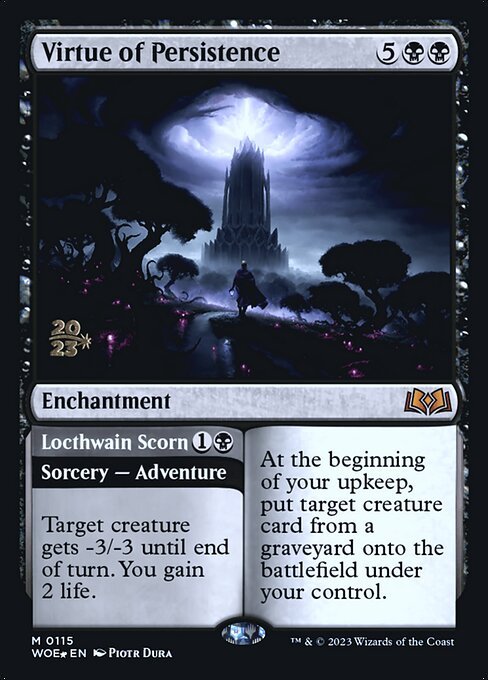 - obligatory addition, since there's absolutely no problem playing it early even when manually drawn.
- obligatory addition, since there's absolutely no problem playing it early even when manually drawn.
Lastly, Lukka, Bound to Ruin is also added to bridge the early and midgame, providing defensive value for its earliest casting turn, or help out ramp into other spells later (should there be a need to manually cast Atraxa or Etali).
is also added to bridge the early and midgame, providing defensive value for its earliest casting turn, or help out ramp into other spells later (should there be a need to manually cast Atraxa or Etali).
Why It Won't Take Over Standard
Adventure Quest Combo
Main 60 cards (26 distinct)
| Creature (15) | |||
|---|---|---|---|
| $0.73 | |||
| $5.76 | |||
| $19.74€21.6614.23 | |||
| $8.00 | |||
| $0.43 | |||
| Instant, Sorcery, Enchantment, Artifact (13) | |||
| $12.49 | |||
| $3.00€2.09 | |||
| Planeswalker (2) | |||
| {R/G/P} | $0.540.02 | ||
| Other (4) | |||
| $0.35€0.320.02 | |||
| Land (26) | |||
|
1
Forest

|
$0.150.03 | ||
|
1
Plains

|
$0.140.03 | ||
|
1
Island
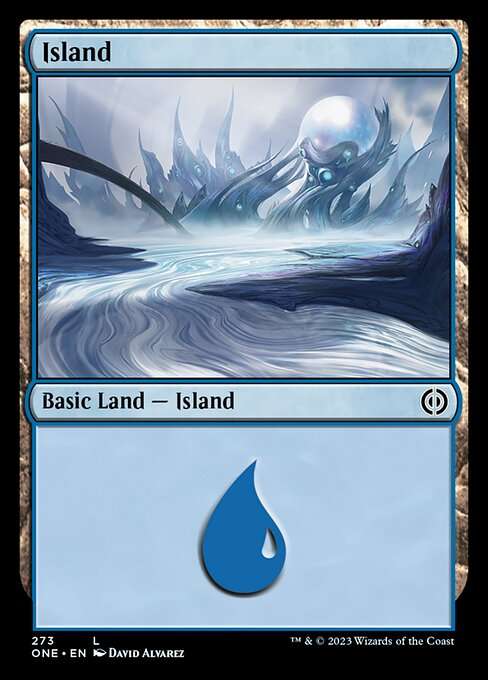
|
$0.160.03 | ||
|
1
Swamp

|
$0.150.03 | ||
|
1
Mountain
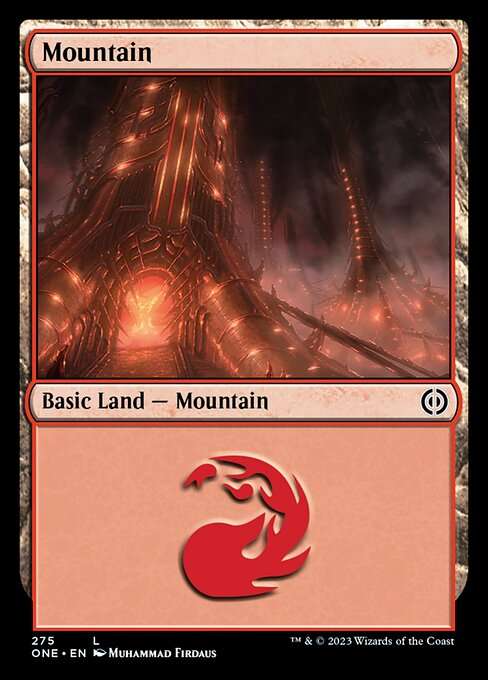
|
$0.200.03 | ||
| $1.32€1.750.04 | |||
| $5.18€4.070.54 | |||
| $5.78€6.041.21 | |||
| $3.95€3.770.55 | |||
| $10.45€11.470.17 | |||
| $11.66 | |||
| $10.00 | |||
| $10.00 | |||
| $8.56 | |||
| $7.80 | |||
(Decklist and Gameplay Video via LegenVD)
After witnessing how the deck works, it does feel kind of worrisome if this is to become the next meta curse of an Eldraine set. It may essentially be a three-card combo, but because of the deck's structure, you really need a successfully casted Invasion of Alara // Awaken the Maelstrom to get the ball rolling. The value upon value that it creates afterward just turns into this spire of chaos that could very well intimidate players into conceding, if they haven't technically lost the value game yet at that point.
to get the ball rolling. The value upon value that it creates afterward just turns into this spire of chaos that could very well intimidate players into conceding, if they haven't technically lost the value game yet at that point.
And as many have indeed feared, a good number of players have already tested it in MTG tournaments and won. It is undeniable proof that the deck does have meta potential, and that we might see the meta warp yet again into this very next big thing that seems poised to threaten its status quo.
But as astonishing as this deck performs, I personally don't think it would invade the meta. Sure it will eventually become part of the meta, but expecting Oko-levels of being broken? Probably not. Here are several reasons why:
The deck has no reliable way of accelerating Invasion of Alara - the next most reliable thing that you have in the deck's arsenal to search for Invasion of Alara are seven mana value creatures. Adding tutors puts the stability of the battle card's effect at risk, as you would then have to contend with whiffing somewhat more often if you add even one more viable effect target.
It plays pretty much like any other Standard deck until turn five - more specifically, a control or midrange deck, since your objective is to halt your opponent's advance during preparatory stages. Even if the 'invasion' eventually occurs, certain resource combinations will still feel like playing you're typical Standard meta deck. Besides, there are quite a lot of Standard decks that can end games on turn five or six, regardless of whether its Bo1 or Bo3.
The combo is too integrated to be adapted anywhere else - the special combination of all the cards also serves as its limitation when it comes to being integrated into other builds. By itself, it is an "engine", and cannot randomly take other meta components without potentially ruining the fixed synergy of all other cards.
You can only optimally cast two Invasion of Alara - and even then, there's no guarantee that it would be an instant win. This is because at that point you have technically dug up half of your target cards, not counting those that are already milled or drawn earlier. If not concluded within a turn or two, the game will eventually grind down to a beefy spell contest (Atraxa will hopefully get you to the finish line at that point).
Five colors, like absolutely one each color - even if using a fairly diverse mana base with tri-color lands, there is still that tiny bit of chance it won't work out exactly on turn five. Well, I guess it's just up to Herd Migration and Lukka, Bound to Ruin
and Lukka, Bound to Ruin if that happens.
if that happens.
Counterspells - 'nuff said.
Conclusion: A Very Welcome Addition, But no Reason to Fret
Bramble Familiar and Invasion of Alara indeed have shown once again the potential of a value combo that sets off a chain of other effects that makes it seem like you are playing on an older format. When it works, the number of things to play becomes quite dizzying, even for the user. But it's not perfect. It's not too broken. And other decks can still claim victory when given ample response headroom like any other competitive deck.
I'd say we just welcome this new neighbor with open arms, and see the potential they have to mold the current Standard MTG meta. At the very least, we can observe carefully how it stabilizes over the next few months before the next big Standard update.
And if I turn out to be completely wrong, time will also tell.
About ChrisCee:
A witness since the time the benevolent silver planeswalker first left Dominaria, ChrisCee has since went back and forth on a number of plane-shattering incidents to oversee the current state of the Multiverse.
"Target bird is no longer available. Please leave a message after the last bounce."



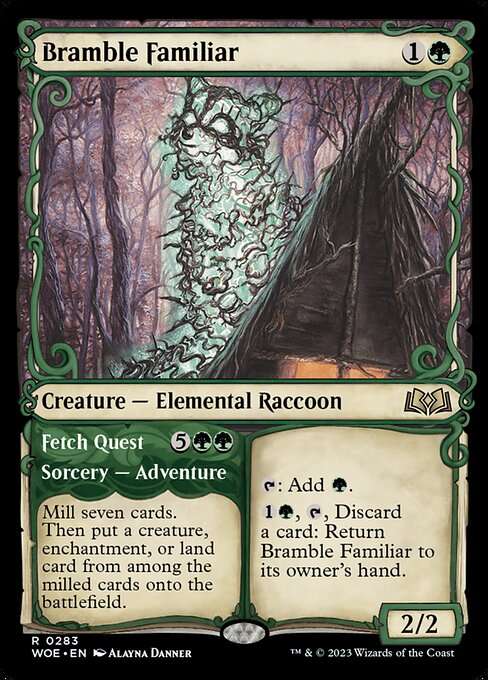


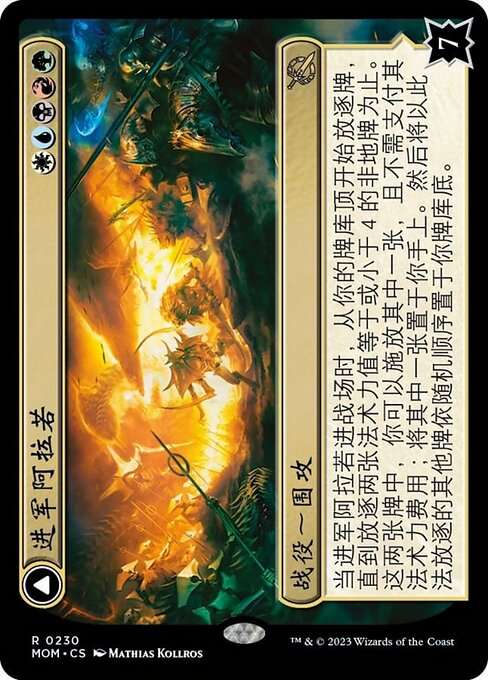
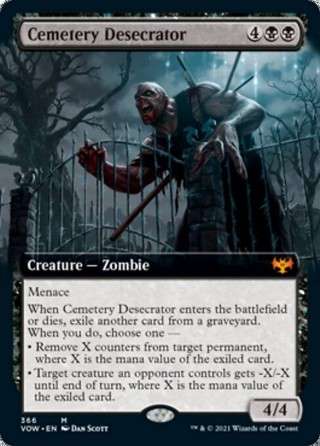
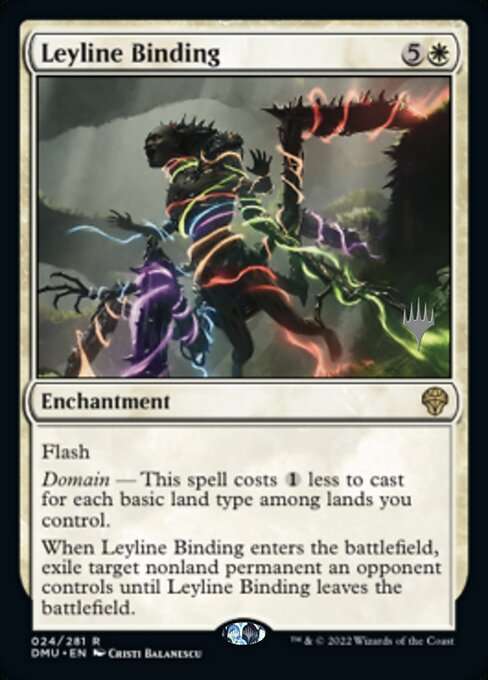
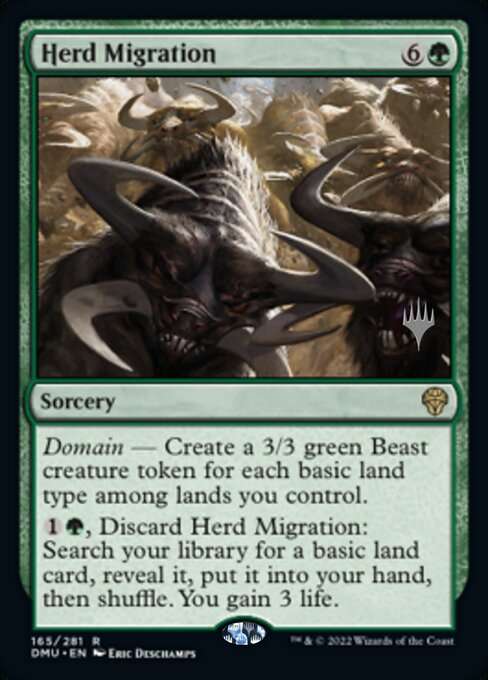
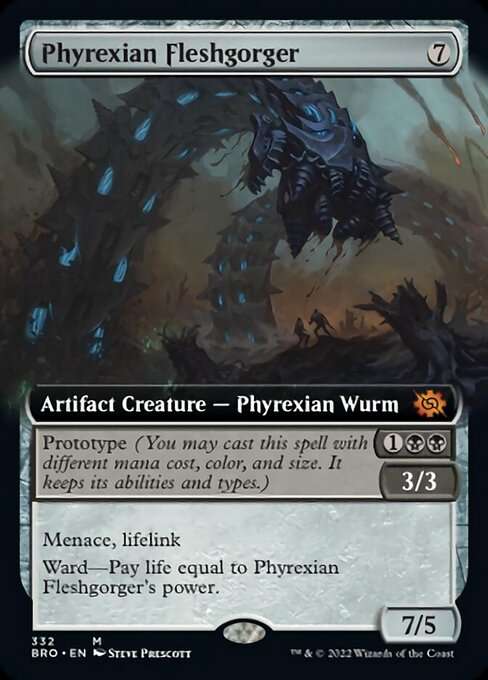

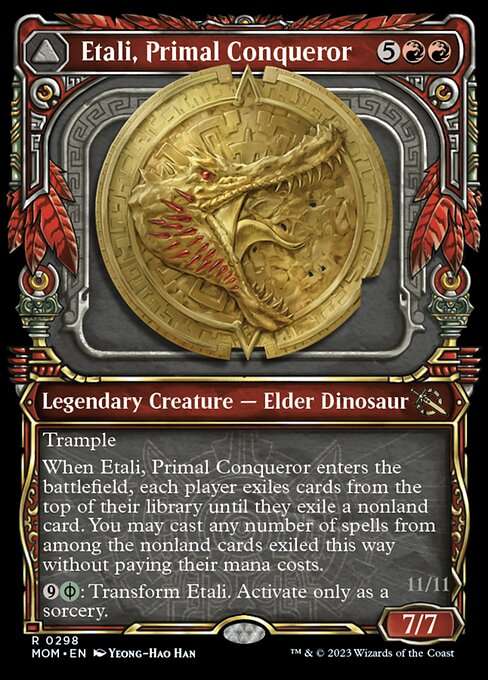

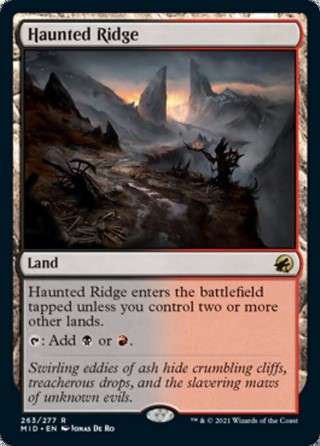

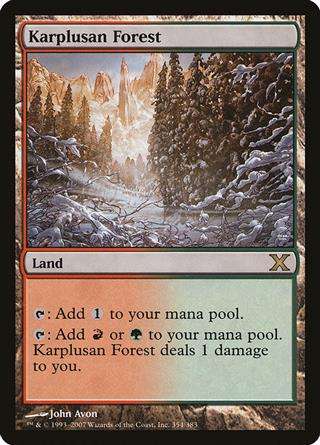




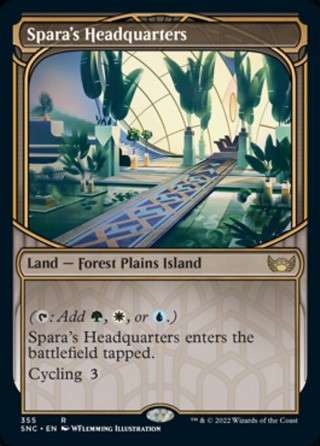
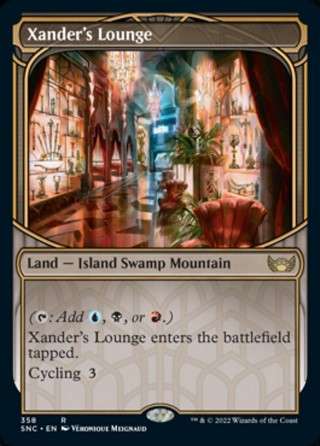
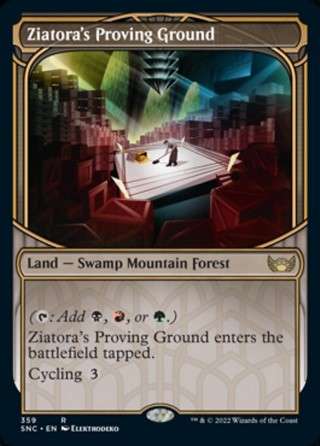


I could see it becoming bannable if mana bases improve some. A Mana Confluence reprint for example would be bad news